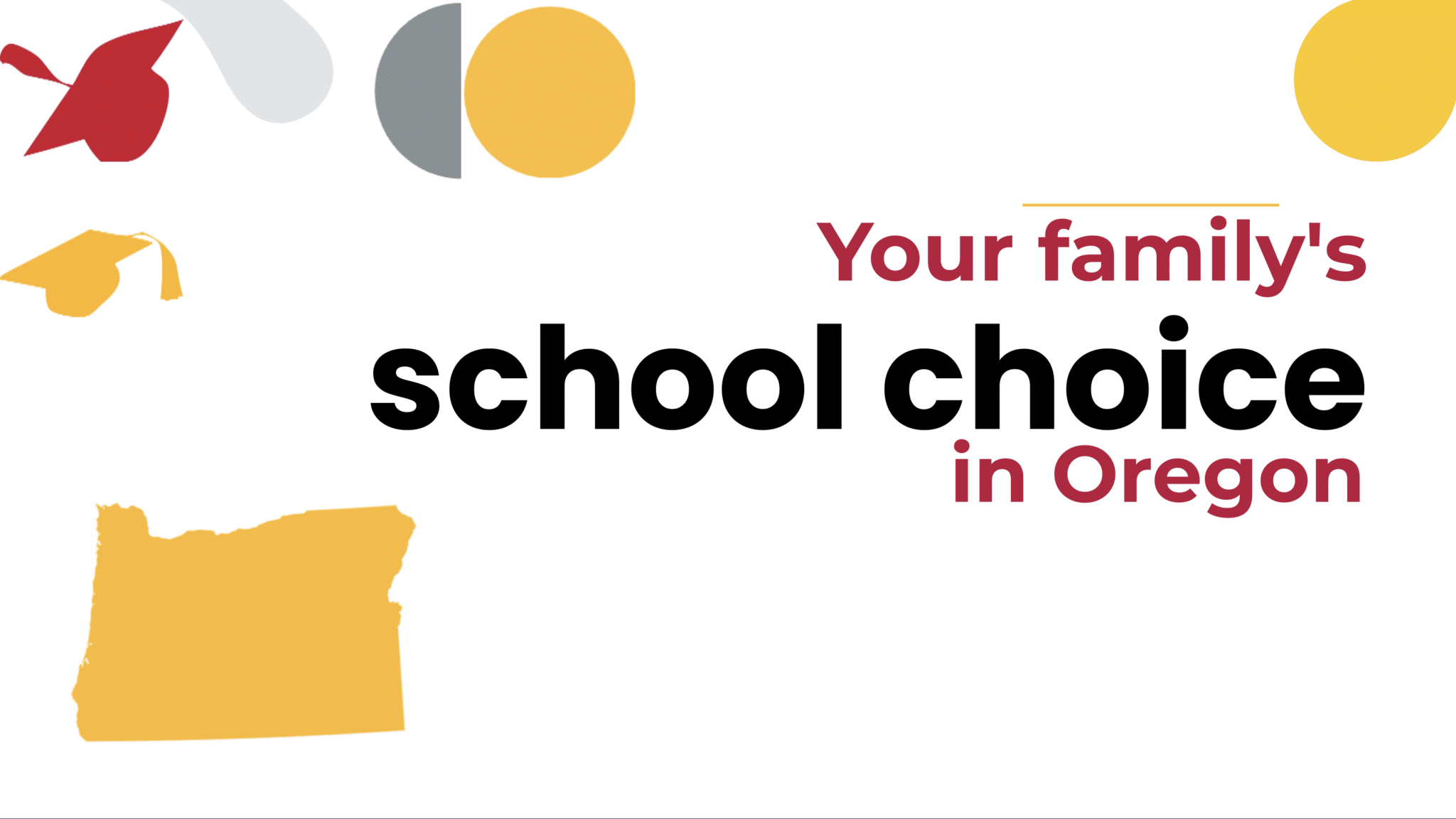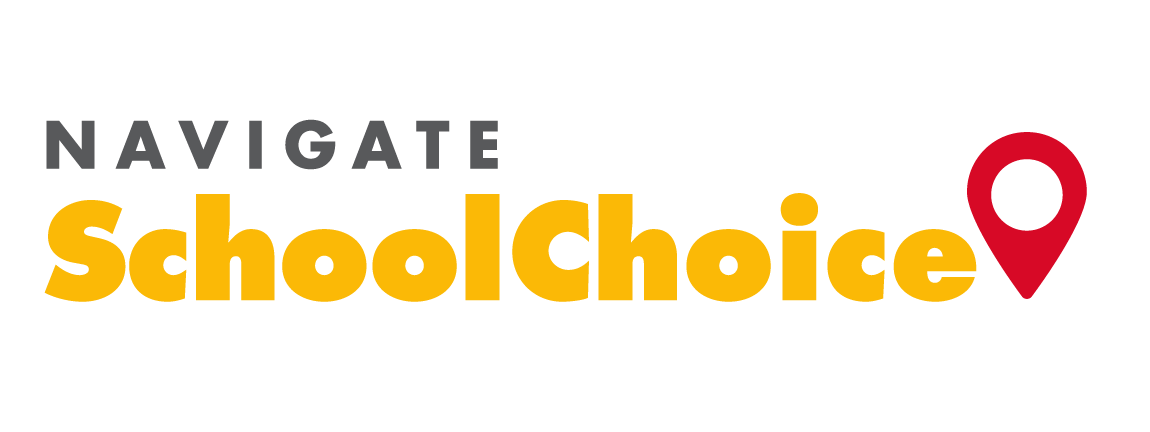Choosing a school? You’ve got options.
Deciding where to send your child to school is a big decision (no pressure)! Fortunately, you’re not alone. Thousands of Oregon parents are making K-12 school choice decisions each year. And remember, each child is unique. So, the “best” school for your neighbor’s child may be different than the “best” school for your child.
In Oregon, you have access to more K-12 education options than you might realize. Navigating these options can help you find a great school for your child. In short, you can choose from traditional public schools, public charter schools, public magnet schools, private schools, online learning, homeschooling, and microschooling and mix-and-match learning.
Looking for special education options? You can learn what special education services are available in Oregon at the Ultimate Guide to Special Education.

- Traditional Public Schools
- Public Charter Schools
- Public Magnet Schools
- Private Schools
- Online Schools
- Homeschool
- Microschooling
Oregon Traditional Public Schools
In Oregon, 81.6% of all K-12 students attend traditional public schools. Traditional public schools are free, open to all students, operated by districts, and funded by taxpayers like you. On average, Oregon spends $13,875 per public school student each year.
Most states have some form of open enrollment, which refers to whether parents can send their child to a public school other than their assigned school. This is an important choice, widening parents’ options and ensuring that their zip code isn’t the sole determiner of their education.
Unfortunately, Oregon currently has very limited open enrollment policies for public schools. The state of Oregon did establish temporary open enrollment between school districts in 2012 to support school choice, but the policy ended in 2019.
While open enrollment is not widely available to Oregon families, they may still request an interdistrict transfer (which requires the consent of both the sending and receiving district). Some districts, such as Reynolds School District, also allow families to request an “area exception” for which school they attend within their district.
Find out more about public schools in your state at the Oregon Department of Education. You can also learn more about open enrollment at “Public Schools Without Boundaries: A 50-State Ranking.”
Oregon Charter Schools
Oregon families can currently choose from more than 130 public charter schools. In Oregon, 6.7% of all K-12 students attend a public charter school. Like traditional public schools, charter schools are public, free, and typically have no requirements for entry. What distinguishes charter schools is that they have extra freedom to innovate with curriculum and learning methods. Charters are accountable to authorizing bodies for results.
Each school has a charter which explains the school’s purpose and what specific community need it serves. For instance, that might be offering a Spanish immersion program, like Arco Iris Spanish Immersion School in Beaverton, or a rigorous, literacy-based curriculum. If there are more families seeking admittance to a charter school than there are seats, a lottery system (like drawing random names out of a hat!) is usually used to determine admittance.
Recently we talked to an Oregon public charter school with a dual enrollment program, Baker Early College. “The whole point of the early college is if a student is ready to go to college while they’re in high school, we want to facilitate and make that happen,” described superintendent Daniel Huld. “Our students complete all of their classes at the local community colleges. In the case of eastern Oregon, we actually have students going to Eastern Oregon University.”
Free transportation is provided to all Oregon charter school students within their school district. Elementary school students living more than 1.5 miles away must receive transportation, either from the charter school or the district. Out-of-district students may use existing bus routes and transportation services of the school district where the charter school is located. Students with special needs and an Individualized Education Program (IEP) are eligible for transportation assistance.
Oregon originally passed charter school legislation in 1999. You can learn more at the League of Oregon Charter Schools.
Oregon Magnet Schools
You can also choose magnet schools! Magnet schools are free public schools that allow kids to narrow in on a specific learning track, such as engineering or the performing arts. At a magnet school, all the subjects are taught through the lenses of that specific track. There are several magnet schools in Oregon. For example, you can read about Bend La Pine School District’s magnet choices, Portland Public Schools’ choices, and Beaverton Schools’ magnet choices. Oregon’s magnet programs range from community-building to performing arts and more. If there is one near you with a theme that interests your child, this could be an exciting choice to consider.
Oregon Private Schools
Families in Oregon can also consider private schools, nonpublic schools that charge tuition. Private schools may offer a unique curriculum, smaller class sizes, or a faith-based tradition. Oregon’s more than 460 private schools come in all shapes and forms, from religious schools to schools designed for children with special needs.
The average tuition for private schools in the state is $9,485 for elementary schools and $12,011 for high schools. Unfortunately, there are no state-run scholarship options in Oregon at present, but private scholarships may be available. Also, parents can save for K-12 private school tuition using tax-preferred 529 savings accounts.
Learn more at Children’s Scholarship Fund-Oregon, the Archdiocese of Portland Catholic School Directory, and Private School Review: Oregon.
Oregon Online Learning
Whether your child wants to accelerate his or her learning or needs a quieter environment in which to focus, you may be interested in giving virtual school a try.
Oregon has about a dozen online public charter schools serving families across districts in all grades K-12. These include Clackamas Web Academy, Metro East Web Academy, Oregon Charter Academy, Oregon Family School, Sheridan AllPrep Academy, Silvies River Charter School, TEACH-NW, Willamette Connections Academy, Oregon Connections Academy, Cascade Virtual Academy, Frontier Charter Academy, and Baker Web Academy. A full list, including virtual charters only serving specific grades or districts, is available at the Oregon Department of Education website.
In order for funding to follow a student to an online charter school, the student’s family may be required to submit a letter of intent, stating that they will be enrolling in a virtual school. You can learn more about the online school community at the Oregon Virtual Public School Alliance.
Another option for some Oregon families is to attend a district-run online school. Districts such as the Beaverton School District, the Hillsboro School District, Bend-La-Pine Schools, the Eugene School District, and Salem-Keizer Public Schools have developed their own online programs.
For part-time courses, students can ask their district if they can enroll in courses through Oregon Virtual Education, a statewide network that supports online learning and offers a catalog of approved courses.
To read more about online learning in Oregon, check out the Digital Learning Collaborative’s state profile.
Oregon Homeschooling
Oregon families can also choose to homeschool, which allows for high levels of customized learning and flexibility. Homeschooling is the process of parents educating students at home and is permitted in all 50 states. In Oregon, about 4 to 5% of K-12 students are homeschooled.
In Oregon, notice of your intent to homeschool is required within 10 days of starting. It is recommended that you formally withdraw from your public school so your student is not marked truant.
While the state doesn’t lay out specific subjects that homeschooling families must teach, it does require that homeschooling students take tests approved by the State Board of Education in certain grades. Keep in mind that homeschooled students in Oregon may still be eligible to participate in sports or activities at local public schools.
Oregon offers limited funding assistance for home education if you are enrolled via a charter, like Oregon Family School.
You may also want to check out the Oregon Department of Education’s Homeschooling page, the Oregon Home Education Network, Home School Legal Defense Association – Oregon, and the Oregon Christian Home Education Association Network.
Oregon Microschools and Mix-and-Match Learning
Today, many Oregon families are mixing and matching school options to come up with new ways to personalize education. Microschools are one of these ways. A microschool refers to students gathering together in a small group – with adult supervision – to learn, explore, and socialize. Microschools can take a variety of shapes and legal forms, from homeschoolers coming together at an enrichment center to a private school committed to small classrooms. What microschools share in common is a commitment to small-group learning and close-knit relationships, along with an emphasis on children as individual learners.
Here are real examples of microschools and related resources in your state:
- Activate is a full-time microschool in Portland specializing in serving students with dyslexia.
- Anchored Hope is an independent microschool in Sherwood that partners with and provides enrichment for families who homeschool, unschool, attend charters, or make other choices.
- Madrona Folk School is a microschool in Grants Pass offering classes for homeschoolers in inspired academics, arts, and land-based living skills.
- Oregon officials have suggested that they may regulate multi-family pod programs under the state’s childcare guidelines.
Remember, microschooling is more a mentality than a specific legal distinction in most cases. Often, a family participates in a microschool while legally homeschooling, or being enrolled in a private or online school.
[nscw_school_finder]
Microschooling and Mix-and-Match Learning
How can it empower parents and help kids achieve their dreams?
7 Step Guide
Tips to help you find a school where your daughter or son will learn, succeed, and be happy.
Education Resources for
Oregon Parents
For additional information about school choices in
Oregon, visit these resources:
Every state is different when it comes to school choice options.
Sign up below to get a detailed comparison:
"*" indicates required fields

